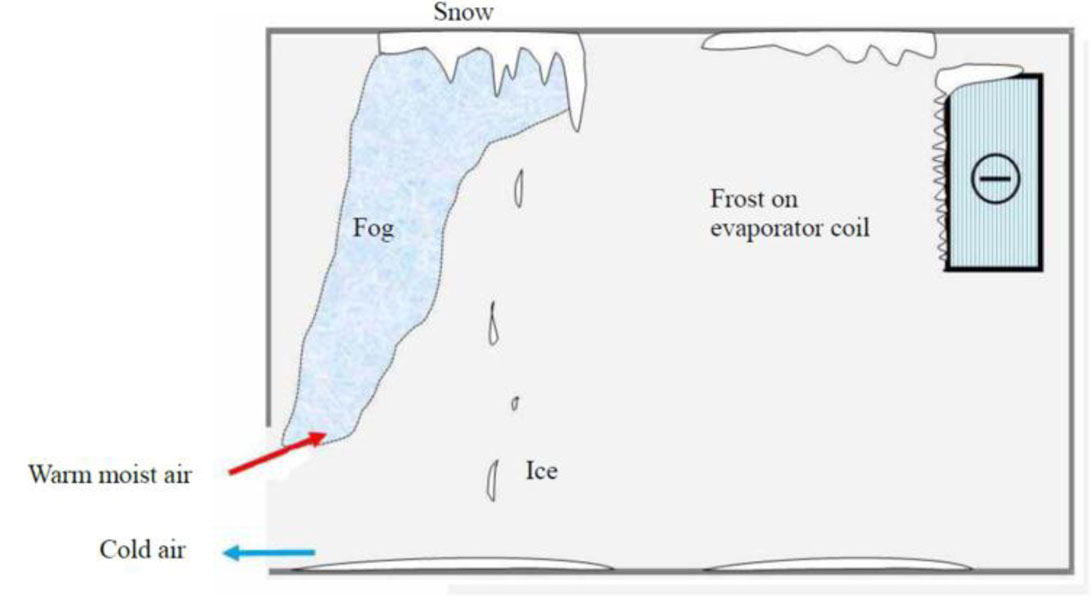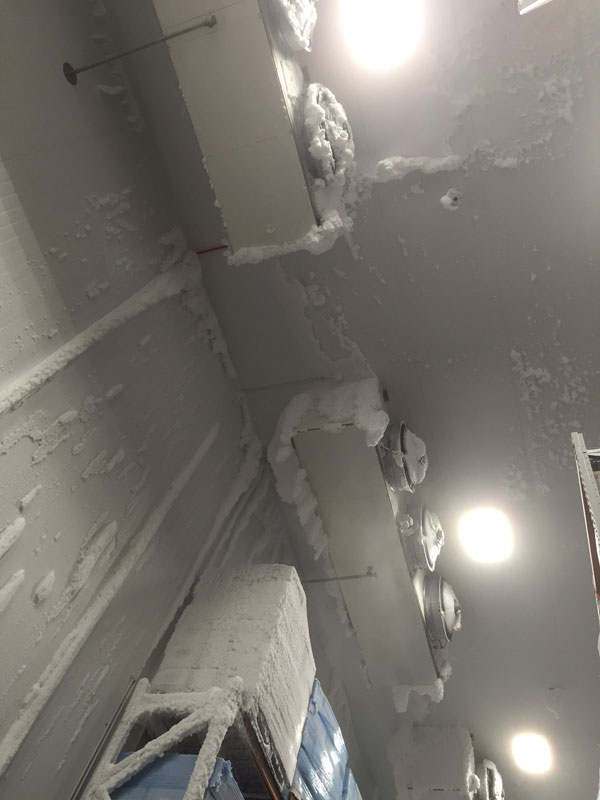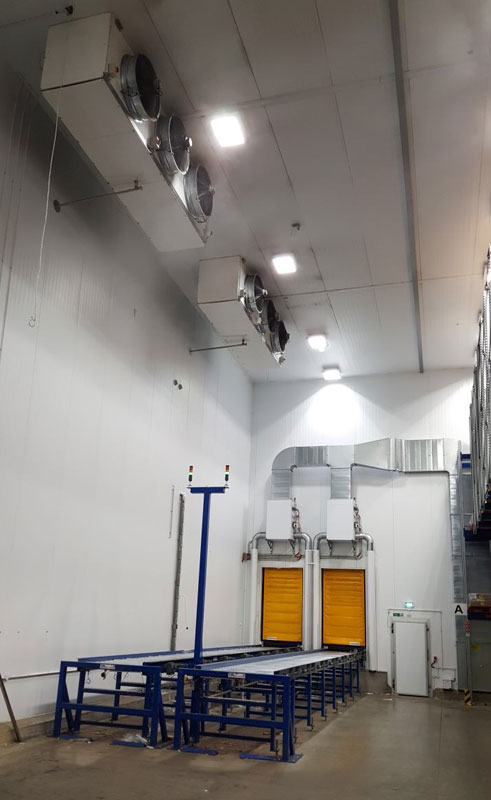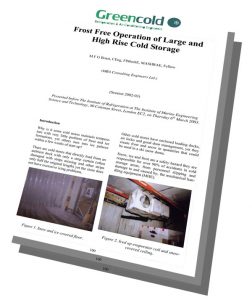Ice Build-up inside coldstores
Ice build up is caused when moist air enters the cold store. Sometimes there can be thin layers of ice which has the appearance of snow. When the moist air comes in to contact with cold surfaces such as floors, walls and evaporator coils, the water vapour in the air condenses to form water and then freezes to form ice.
Moisture typically enters the cold store or freezer during door opening times. As the doors open warmer, more moist air in naturally drawn into the cold store, which in turn causes fog, condensation, ice and snow. Most cold stores require constant opening and closing of doors to move product so restricting door opening times in not as option.
Even when the doors are closed, air will be sucked into the store because of the negative pressure created by the temperature difference. Plastic strip curtains will reduce the amount of warm moist enter entering the cold store, but a complete solution involve using and Icedry dehumidifier to stop any moisture entering the cold store at its source.

Above: Ice and snow can still accumulate inside coldstores when when evaporators are positioned away from the entrance door.
Delivered Solution
As you can see from the images below, which illustrate the problem before and after our solution was applied, the air curtains dehumidified to stop ice on the floors, walls and ceiling of this coldstore.
Further below we’ve linked to a longer and much more detailed article which was presented before the Institute of Refrigeration, regarding our approach and solutions to mitigating ice buildup.

Above: Ice build-up in the coldstore before we applied our solution.

Above: The same coldstore, after fast closing doors and dehumiidifier installed
Three ways to reduce ice in cold stores
1. Limit number of seconds door is opened each time.
Do not under estimate how much moisture enters the cold store every time the doors are opened. If you can reduce the number of seconds the door is opened for you will significantly reduce the amount of moist air entering the cold store. Rapid doors on timers are a good idea here. Or put in the practise of the shutting the door straight after you enter. Do not leave the cold store door open as you are packing or looking for product!
2. Install plastic strip curtains.
Plastic curtains are a good way to reduce the amount of air that enters the cold store during door opening times. The curtains act as a barrier so that is harder for the moist air to get into the cold store. However, moist air will still get into the cold store through the gaps and when forklift is running through the curtains.
3. Use an Icedry dehumidifier to ensure your cold store is kept dry.
The best way to ensure your cold store is kept as dry as possible and ice and snow build up are severely reduced. The Icedry does this by dehumidifying the air as it enters the cold store, ie at loading bay door or in airlock. As the doors open, the solution is to capture the moist air, dehumidify it, and supply dry, low dew point air at the entry doors. This dry air is drawn into the cold store when the doors open and circulates freely across the floor to keep it dry.
Key Facts:
- IceDry is the only dehumidifier available that can be placed inside the cold store.
- IceDry has been specially designed to withstand the tough, cold environment within cold stores, ensuring the unit runs reliably and efficiently.
- Even when the doors are closed, IceDry will still sublimate ice and snow inside the cold store, in comparison to an airlock, which is running during the logistic time.
- IceDry is flexible – it will continue to work to reduce ice and snow build up throughout the day and night.
* The above information is from Air Solutions of New Zealand

